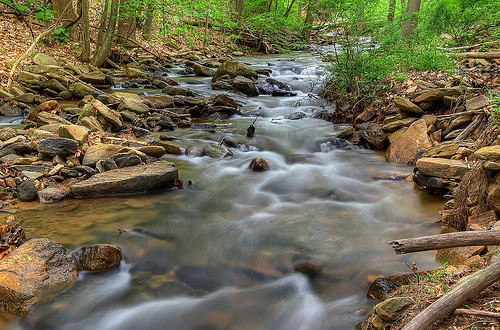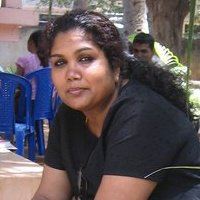Editor’s Note: WorkingPreacher.org published commentaries that correspond with the readings for Season of Creation 2014: Series A (The Spirit Series). A full listing of worship resources (including liturgies to accompany the readings) can be found online at http://seasonofcreation.com/worship-resources/readings/.
It is said that faith parts rivers and moves mountains. The rivers of India hold huge significance in the lives of Indians, and they are wrapped in mythology, religion, and legends. Huge historical and religious significance is associated with most of the rivers of India, and there are major festivals associated with the river. One example, khumb mela — which literally means the “festival of the pot” — is celebrated every three years when millions of devotees part the waters of the sacred river by submerging themselves, to be absolved of sin and to be freed from the vicious earthly cycle of life and death and move towards a heavenly realm, which knows no suffering or pain.
The arduous pilgrimage to these rivers is born out of faith and a hope for a better life. The individual is thus regenerated, renewed, and he or she is given the opportunity to begin life anew having been healed by the waters of the river, which is believed to be mixed with drops of the elixir of eternal life.
Life revolves around rivers; civilizations came to birth alongside rivers; humanity chose to settle by rivers that nourish and sustain them. But rivers are also watery graves and are ferocious in their ability to destroy and take life, through overflowing and through their drying up and thereby snuffing out life.
The observation of River Sunday in the Season of Creation gives us the opportunity to develop an organic sensibility to rivers — to acknowledge death dealing and celebrate the life-giving, generative, and healing properties of rivers. In the Genesis texts (Genesis 8:20-22; 9:12-17), humanity by virtue of its sin is destroyed by water flooding the earth. Noah offers a sacrifice, and God is pleased by the aroma and makes a promise never to destroy the earth or its inhabitants. The rainbow becomes a sign of this covenant, a sign made from the residue of the flood (formed by the geometry of raindrops,) and the sun, another source of life, and light that offers hope. The rainbow needs the sun to exhibit its colors. The sun joins the rain to form the multicolored rainbow. The rainbow is a reminder of the flood and its causes — the disobedience of humanity and its effect on the earth. The same rainbow brings excitement, joy, and beauty, freshness, creativity, and hope of new life, life made possible by the generative power of God.
The hymn to creation, Psalm 104 (Psalm 104:27-33), responds to the propagative and life-giving power of creation and celebrates this creation as the work of God. Verses 27 to 28 attest to the generative capacity of creation and the fact that it is YHWH’s hand that feeds all of creation; YHWH provides food as gift to sustain life by enabling the earth to produce it. YHWH is therefore the source of life, and the world lives by the life-giving breath and spirit of YHWH. The world, in fact all of creation, survives and thrives, is fed and nurtured, by the food and breath of YHWH’s renewing power. Regeneration, rejuvenation, restoration, renewal, through the breath and spirit of YHWH, is vital to the created order.
This theme of God’s generative and renewing capacity is also a part of the Revelation text (Revelation 22:1-5) that describes a river of water of life flowing from the throne of God and the Lamb through the central street of the city. The tree of life is on either side of the river, producing twelve different kinds of fruit satisfying the hunger of all who are hungry and leaves for the healing of the nations. These medicinal leaves offer a vision of an economic and political system that heals us all and heals our world. Food and healing come from a tree, from creation providing life and health.
This city in Revelation is void of all that is cursed — perhaps all (systems, structures, ideologies, and people) that brings pain or sorrow, curtails freedom, and damages the humanity of people; what is in the city instead is the presence of God (the throne of God and the Lamb) and God’s servants whose work and worship witness and testify to this life-sustaining and healing God. This city is not ruled by Rome but by God and God’s servants — a rule characterized not by domination, but by participation in God’s healing of the world. This vision of John with a river of life flowing through the city offers hope to all those cities where life is diminished and encourages all of us as God’s servants to share in the task of bringing God’s healing to the world.
The resurrection of Jesus as narrated by Mathew (Matthew 28:1-10) describes for us the reaction of the women to whom he appeared and the disciples. But it also describes the reaction of the earth. Through the earthquake, the earth expresses its wonder and participates in the joy of the resurrection that offers the hope and promise of new life. In fact, the earth responds even before the human characters in the narrative do. This signals the close and intimate relationship that the earth shares with the divine. The resurrection ushers in a new world, a world that has been redeemed of sin. The Christ who was raised from the dead demonstrates the healing and renewing presence of God in creation.
Our lives are affected and shaped by nature, and the interactions between humanity and landscape have given us insight into the divine, impressing upon us the generative power of God. The texts for this Sunday have called attention to the significance of water, its healing properties and the renewal and restoration that is made possible by this life-giving water. It is in this water that we have been baptized and have thus been renewed. We are therefore called to bring healing and renewal to the world as a mark of our identity as the baptized and the servants of God.

